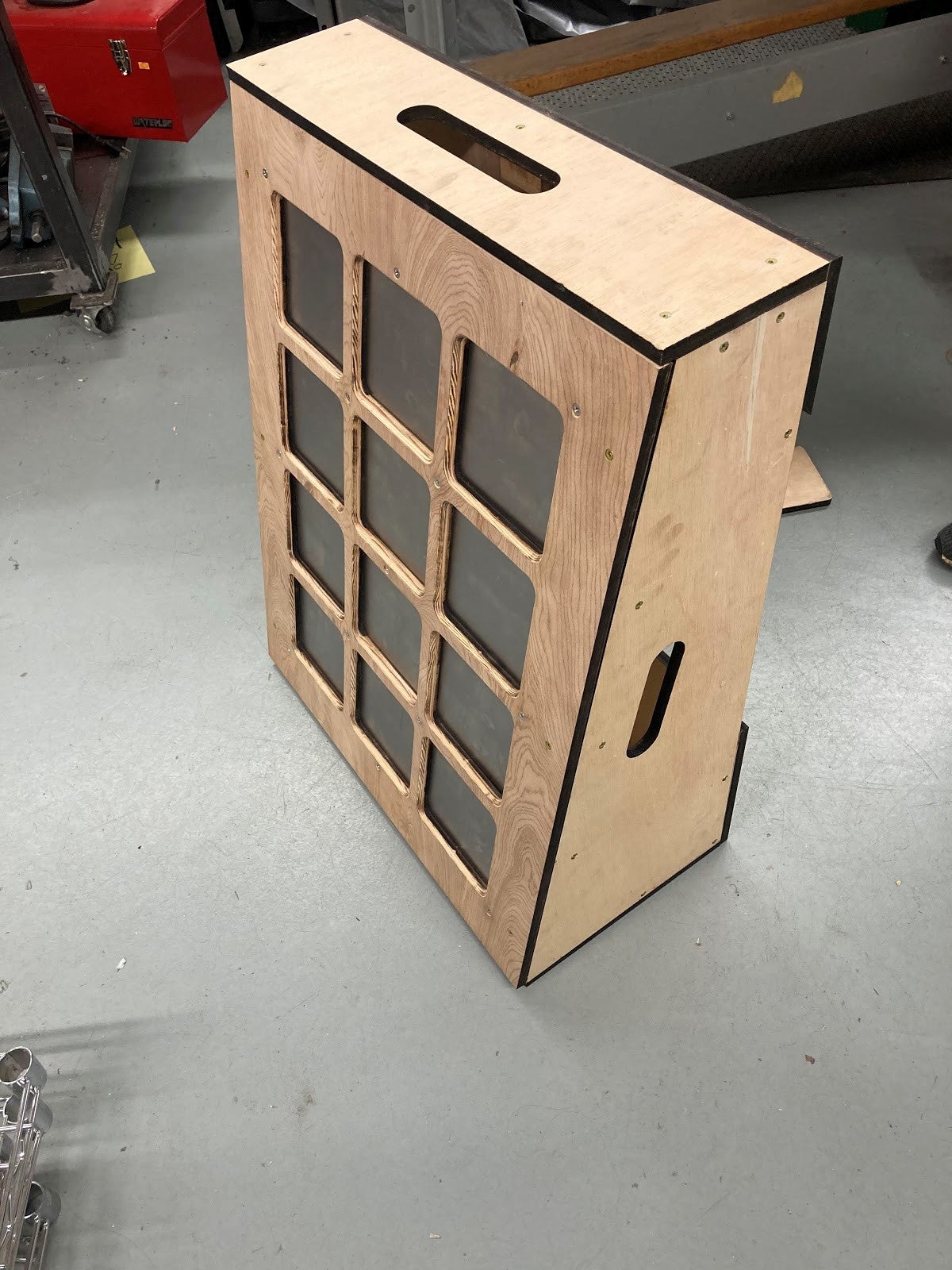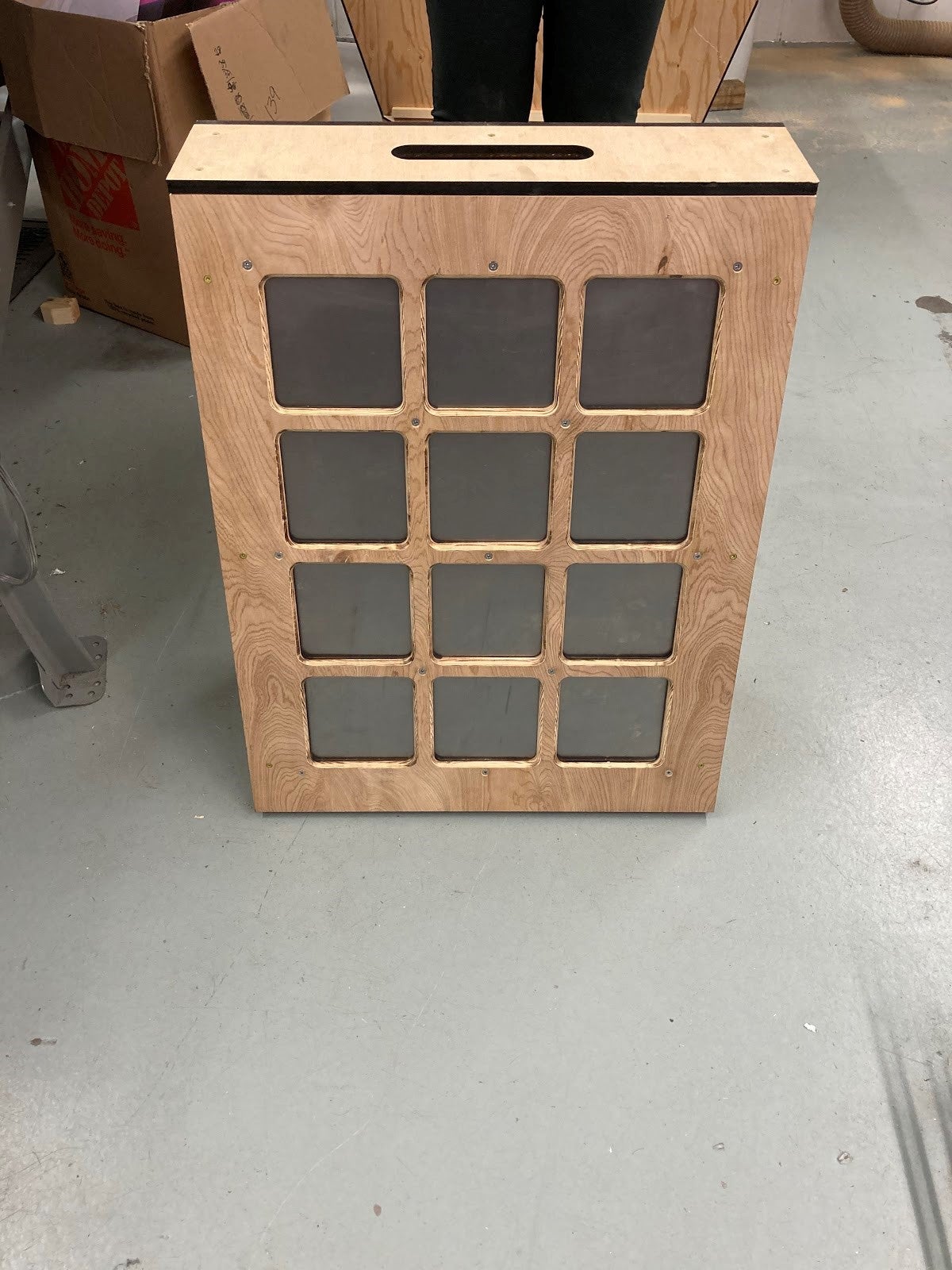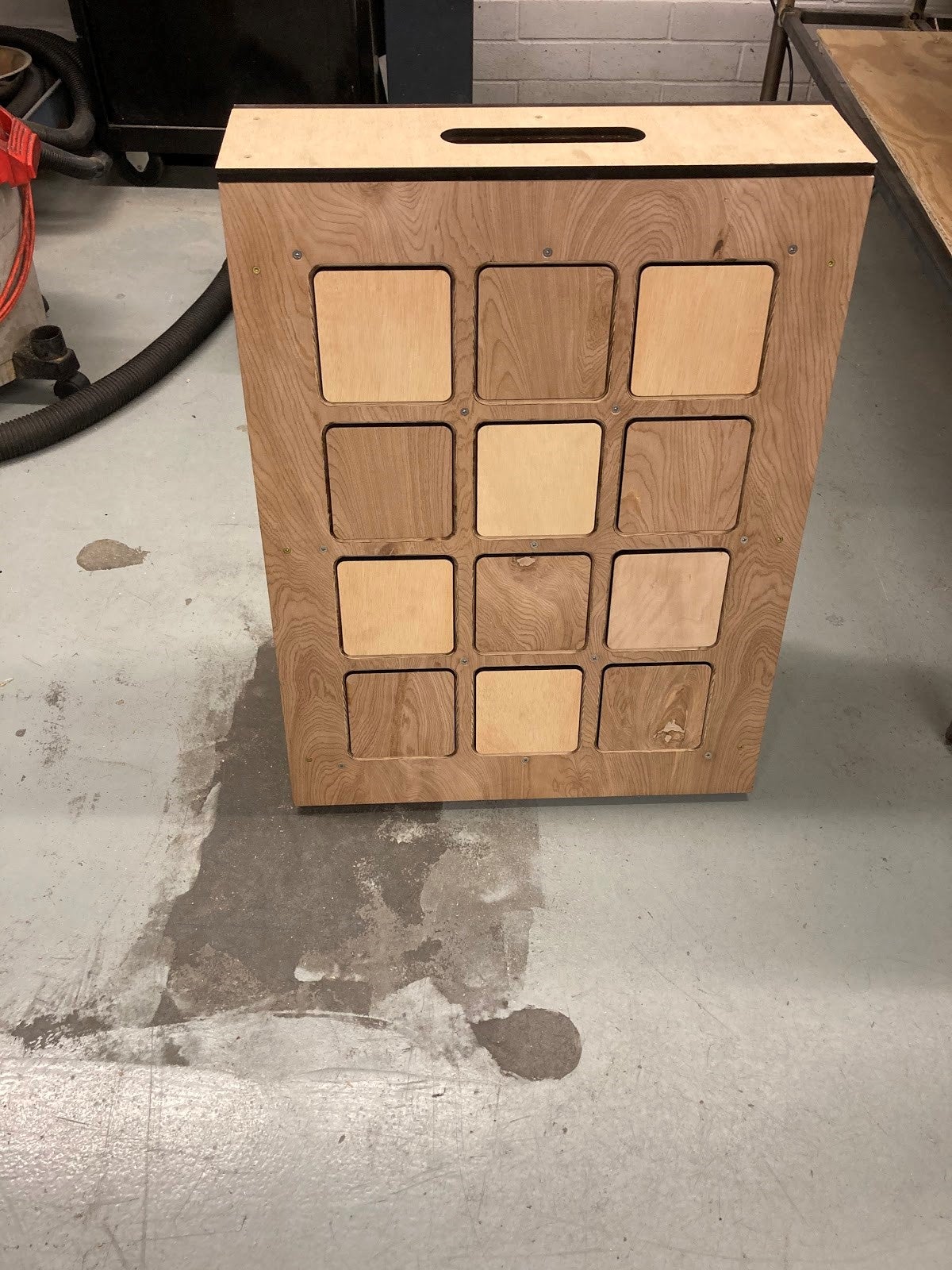Tactile wall with interchangeable tiles
Imagine if you were in third grade and your teacher gave you full access to fidget spinners and any toy you wanted in order to keep focused. For students with a variety of special needs, a tool to manage their anxiety and stress is essential for behavior management in the classroom. We are designing a tactile wall that provides a stress relieving tool for young students in the classroom. This project has been a joint effort between the Engineering Plus program and the College of Education. The goal of this project is to create a research tool for educators to be used in a local special education classroom: a tactile sensory wall. Students from the College of Education will observe the sensory wall in use in order to determine what materials will be most effective in relieving stress in the classroom.
The Team
Members
Capstone Design Coordinator
Tactile wall with interchangeable tiles
Executive Summary:
Special education classrooms serve students with a variety of learning disabilities. A sensory wall can help students to self regulate throughout the day and potentially learn some new skills. One challenge in designing a sensory wall is the wide range of needs for the students. It is difficult to provide a universal solution so very few commercial options for sensory walls exist. In addition, the benefits of sensory walls are not well known and research on the use of this tool is limited. We partnered with faculty members and students in the College of Education to develop a sensory wall to facilitate research on the benefits of the wall for a wide variety of students. Our design is a frame that has spaces for interchangeable panels so that as new students come along with different needs, those needs can be met. Through brainstorming, sketching, and prototyping we have an initial sensory wall assembled. The foundation and frame of the wall was fabricated. The next steps are to create different individual tiles with different materials and objects on them.
Problem Statement
Many special education programs use 3D sensory or tactile walls to help the students learn by providing stimulations and different sensory experiences, including auditory and visual. In our local community there is a classroom in need of a tactile wall that has interchangeable panels so as different students with different needs come along, they can be met as needed. In addition, students and faculty in the college of education are investigating what materials/textures are most beneficial for students in the classroom.
Background
We reviewed the educational literature and worked collaboratively with the students from the College of Education to understand the project’s needs and constraints. The two students from the college of education that initiated this project conducted research about the learning disabilities of the students and how sensory walls are useful for them. Our own research informed our design of an effective sensory wall. We conducted background research on: the neurobiological benefits of sensory walls for students with disabilities, the history and uses of sensory walls, and sensory materials. Safety is always an important part of the engineering process and in a global pandemic there is an added concern of sanitation due to Covid-19.
Solution

Our solution is a portable and mountable sensory wall with slots for removable panels. The wall has a piece of sheet metal attached to it so that the panels can magnetically stick to the wall and be removed by students to use in their own space.
Safety
This project has a high amount of contact with elementary students, and hence, there are quite a few safety considerations. These concern include:
Cleanliness: During the COVID pandemic, materials must be able to be cleaned and sanitized properly.
Structural: The wall must be structurally sound and not collapse or fall on anyone.
General Hazards: The wall cannot have sharp objects or edges that someone could cut themselves on. This includes sanding any wood so there is no risk of splinters. In addition, pinching hazards must be eliminated.
Nontoxic: Any paint or finishes on the wall must be non-toxic
Durable: All the panels are durable because children tend to be not very gentle with classroom materials.
Next Steps

Next steps include attaching the materials to the individual tiles to give a variety of textures to research. Once the materials are on the display and the wall is fully operational, our collaborators from the College of Education will use the sensory wall in a classroom to research students’ reactions.
